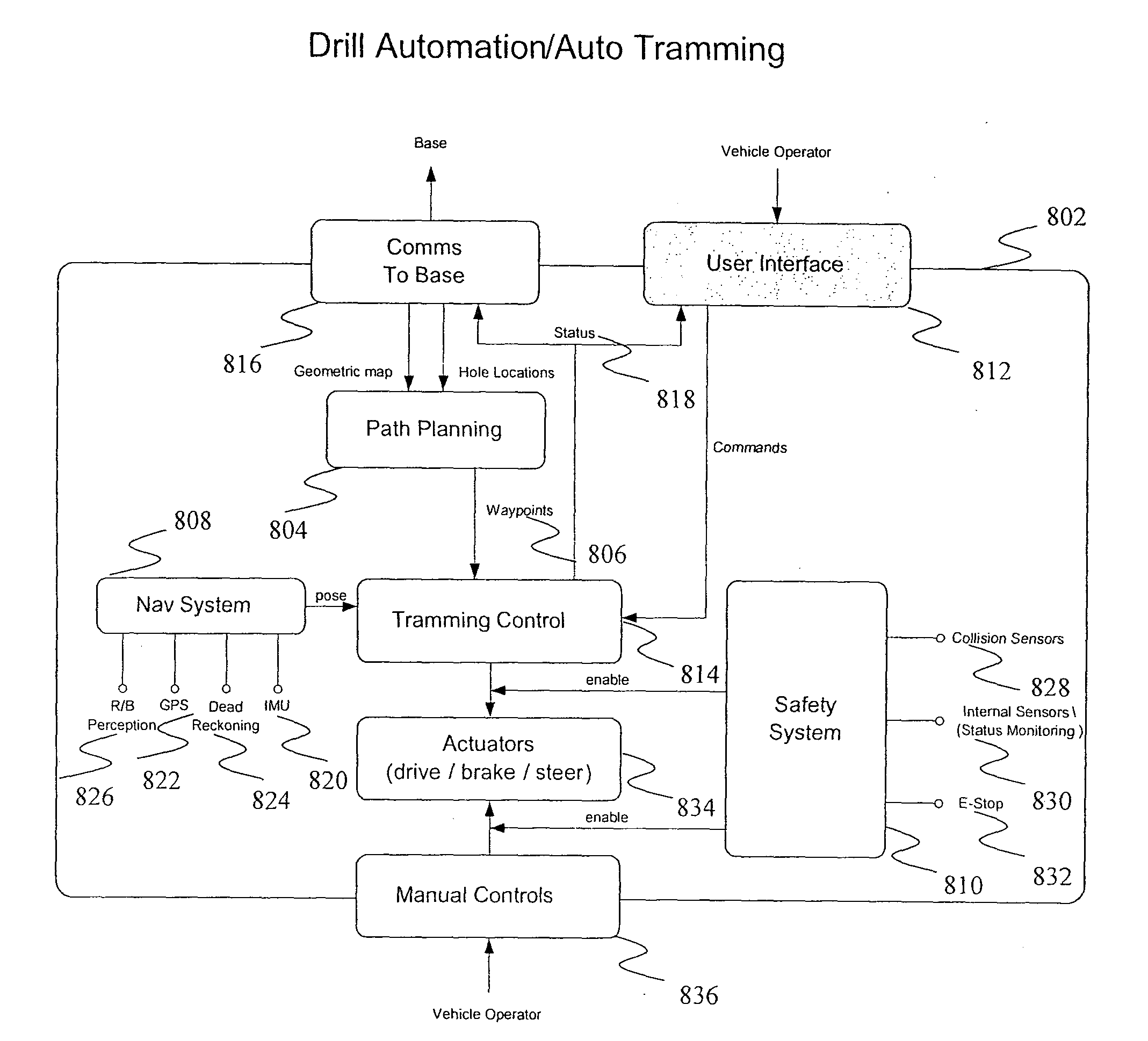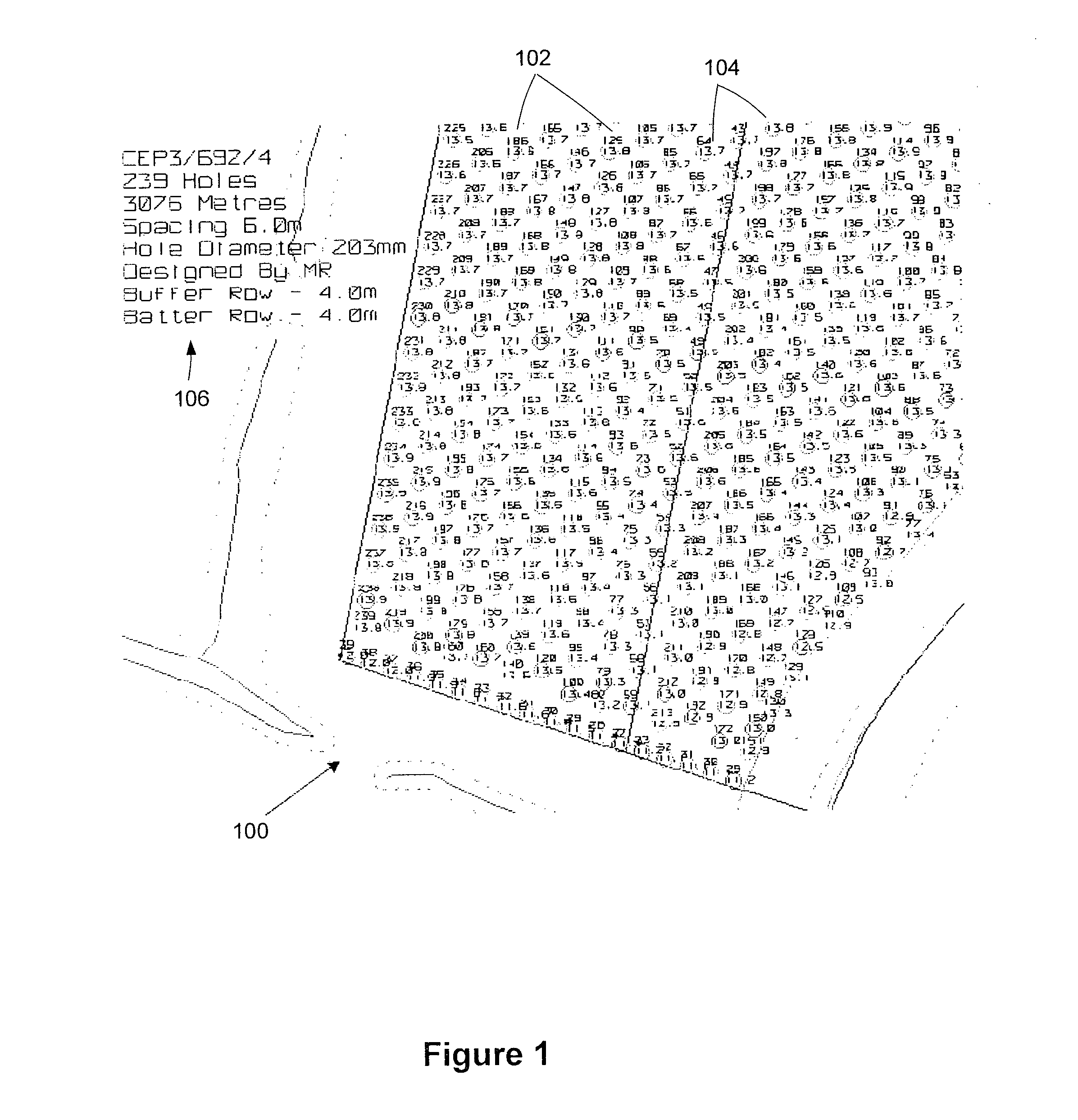Drill hole planning
a drilling hole and planning technology, applied in the field of dynamic sequential ordering problems, can solve the problems of increasing the chances of damage to already drilled holes, causing sequential ordering problems,
- Summary
- Abstract
- Description
- Claims
- Application Information
AI Technical Summary
Benefits of technology
Problems solved by technology
Method used
Image
Examples
Embodiment Construction
[0045]The method and system described herein enable a solution to be derived to an ordering problem. The method and system are described herein with specific reference to the formation of a hole-drilling sequence plan to be derived automatically from certain input data. In one application this enables drill hole planning and navigation for an autonomous drill.
[0046]The pattern drilling problem belongs to a class of combinatorial optimisation problems which may be hard to solve. Combinatorial optimisation is used in applications such as artificial intelligence, operations research, planning and logistics where certain values need to be optimised within the constraints of a given problem. One example of a combinatorial optimisation problem is the generalised Travelling Salesman Problem (TSP) which can be defined as follows:
[0047]Given a set of cities along with the cost of travel between each pair of them, the travelling salesman problem is to find the cheapest way of visiting all the...
PUM
 Login to View More
Login to View More Abstract
Description
Claims
Application Information
 Login to View More
Login to View More - R&D
- Intellectual Property
- Life Sciences
- Materials
- Tech Scout
- Unparalleled Data Quality
- Higher Quality Content
- 60% Fewer Hallucinations
Browse by: Latest US Patents, China's latest patents, Technical Efficacy Thesaurus, Application Domain, Technology Topic, Popular Technical Reports.
© 2025 PatSnap. All rights reserved.Legal|Privacy policy|Modern Slavery Act Transparency Statement|Sitemap|About US| Contact US: help@patsnap.com



